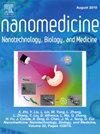Hyaluronic acid based nanoparticles that mediate sustained thanatin release protect against NDM-1–resistant bacterial infections in a murine model
IF 4.6
2区 医学
Q2 MEDICINE, RESEARCH & EXPERIMENTAL
Nanomedicine : nanotechnology, biology, and medicine
Pub Date : 2024-11-27
DOI:10.1016/j.nano.2024.102796
引用次数: 0
Abstract
Thanatin, a potent cationic antimicrobial peptide, has demonstrated remarkable efficacy against new NDM-1 producing bacteria. However, its clinical application is hampered by suboptimal stability in circulation and limited bioavailability in the human body. To overcome these challenges, a novel thanatin nanomedicine has been developed, which encapsulated thanatin in nanoparticles formed by electrostatic interactions between negatively charged HA and PLGA. The obtained ThaNPs demonstrated good stability, low cytotoxicity, and good metabolic ratio. ThaNPs significantly improve the stability of thanatin in the circulation, increasing its half-life in 50 % serum from 0.6 h to 3.2 h. Notably, the protective effect of ThaNPs against sepsis induced by NDM-1–producing Escherichia coli. was 10-fold higher than that of unencapsulated thanatin. These findings suggest that hyaluronic acid-based nanoparticles have the potentiality to overcome the clinical limitations associated with cationic antimicrobial peptides, thereby providing a novel and effective strategy for treating severe infections caused by antibiotic-resistant bacteria.

在小鼠模型中,基于透明质酸的纳米颗粒介导持续的thanatin释放,可防止ndm -1耐药细菌感染。
Thanatin是一种有效的阳离子抗菌肽,对新型NDM-1产生菌具有显著的抑制作用。然而,其临床应用受到循环稳定性欠佳和人体生物利用度有限的阻碍。为了克服这些挑战,一种新型的thanatin纳米药物已经被开发出来,该药物将thanatin包裹在由带负电荷的HA和PLGA之间的静电相互作用形成的纳米颗粒中。所得ThaNPs稳定性好,细胞毒性低,代谢率好。ThaNPs显著提高了thanatin在循环中的稳定性,使其在50% %血清中的半衰期从0.6 h增加到3.2 h。值得注意的是,ThaNPs对产生ndm -1的大肠杆菌引起的脓毒症具有保护作用。比未包封的大麻素高10倍。这些发现表明,基于透明质酸的纳米颗粒有可能克服与阳离子抗菌肽相关的临床局限性,从而为治疗抗生素耐药菌引起的严重感染提供一种新的有效策略。
本文章由计算机程序翻译,如有差异,请以英文原文为准。
求助全文
约1分钟内获得全文
求助全文
来源期刊
CiteScore
11.10
自引率
0.00%
发文量
133
审稿时长
42 days
期刊介绍:
The mission of Nanomedicine: Nanotechnology, Biology, and Medicine (Nanomedicine: NBM) is to promote the emerging interdisciplinary field of nanomedicine.
Nanomedicine: NBM is an international, peer-reviewed journal presenting novel, significant, and interdisciplinary theoretical and experimental results related to nanoscience and nanotechnology in the life and health sciences. Content includes basic, translational, and clinical research addressing diagnosis, treatment, monitoring, prediction, and prevention of diseases.

 求助内容:
求助内容: 应助结果提醒方式:
应助结果提醒方式:


